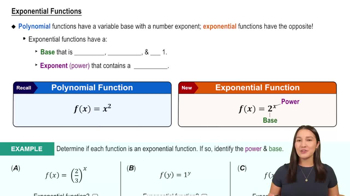In Exercises 19–22, find the slope of the curve at the point indicated.
y = x³ − 2x + 7, x = −2
 Verified step by step guidance
Verified step by step guidance Verified video answer for a similar problem:
Verified video answer for a similar problem:



 5:13m
5:13mMaster Slopes of Tangent Lines with a bite sized video explanation from Patrick
Start learning